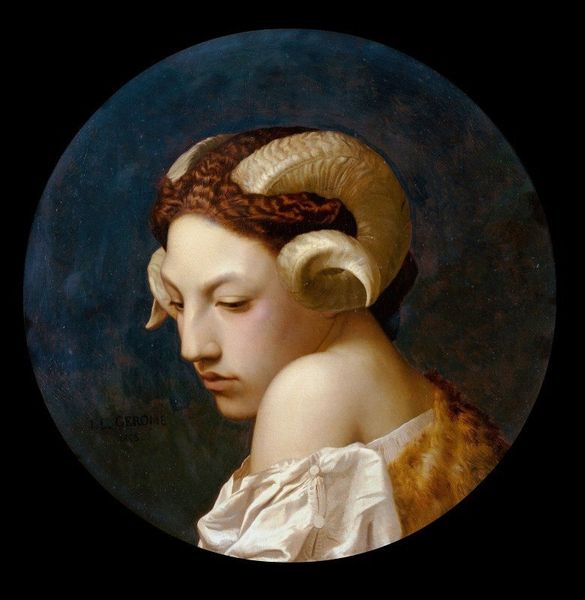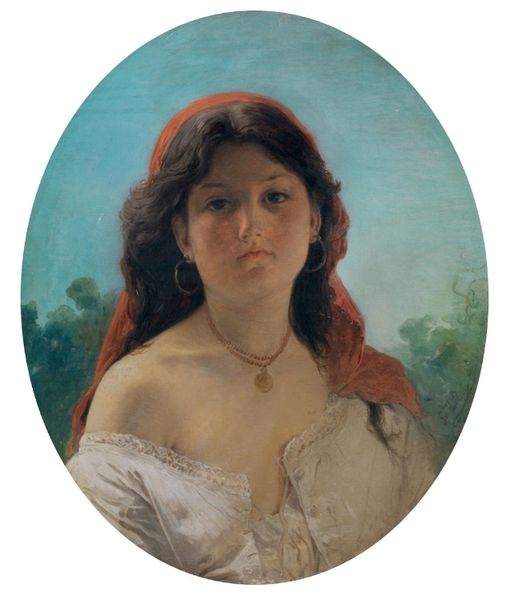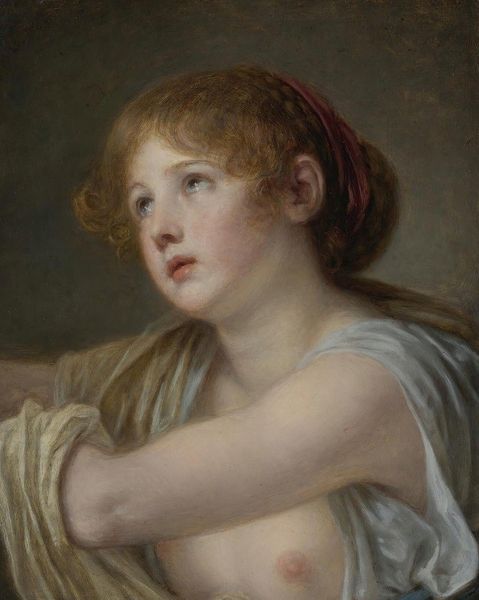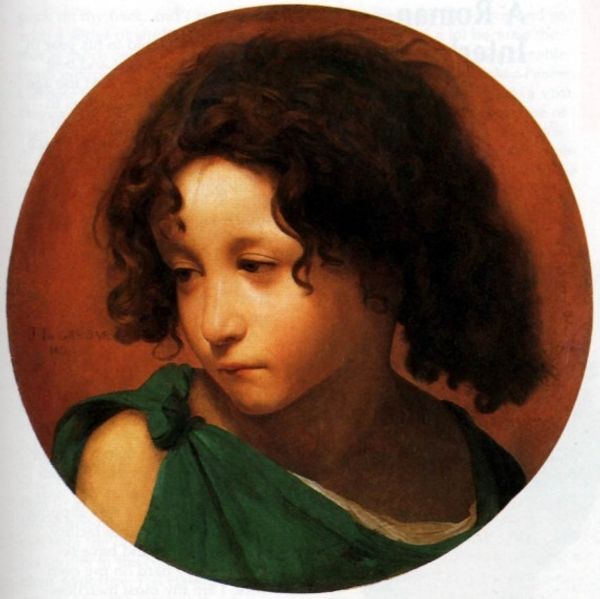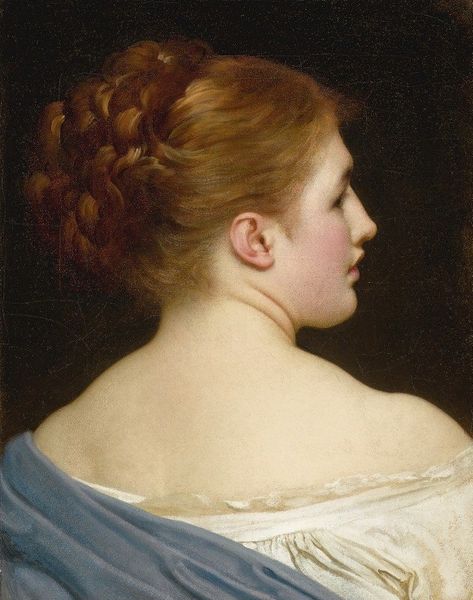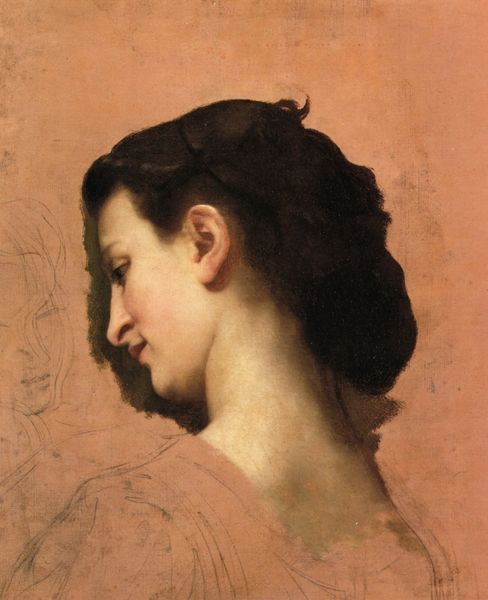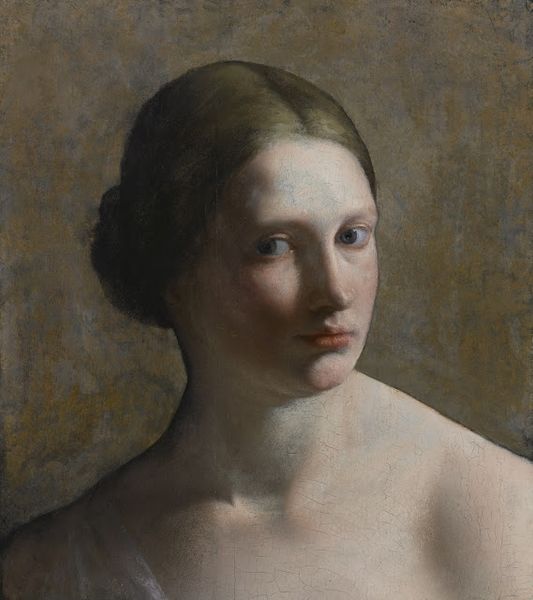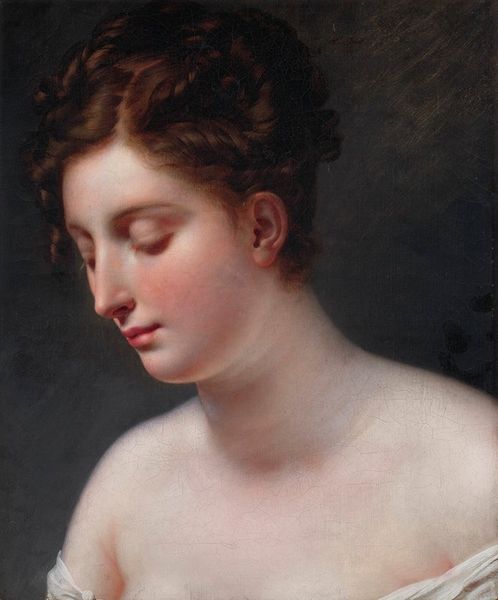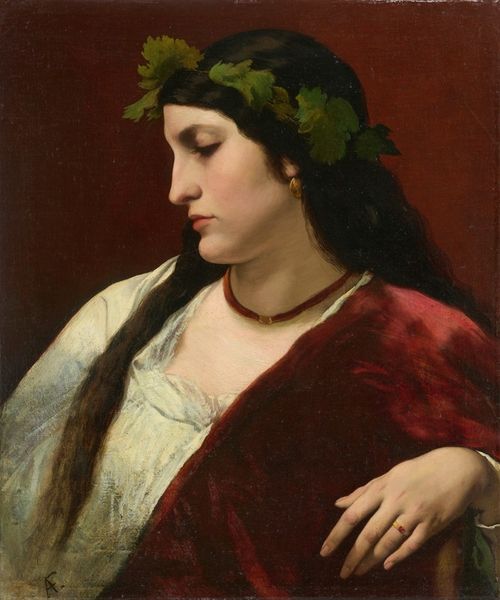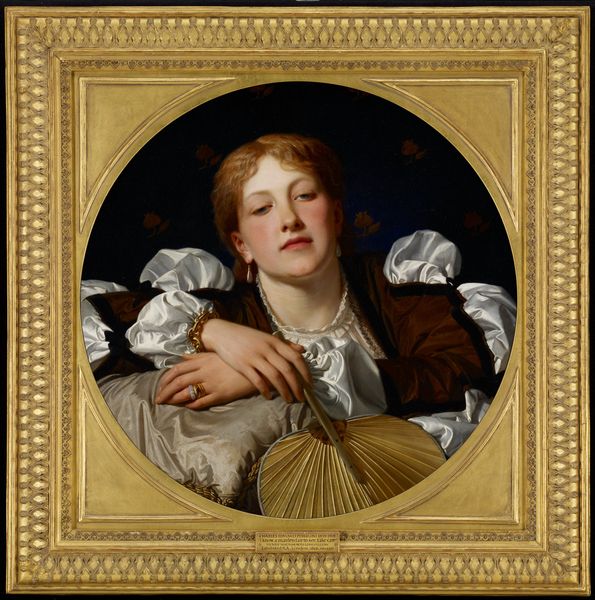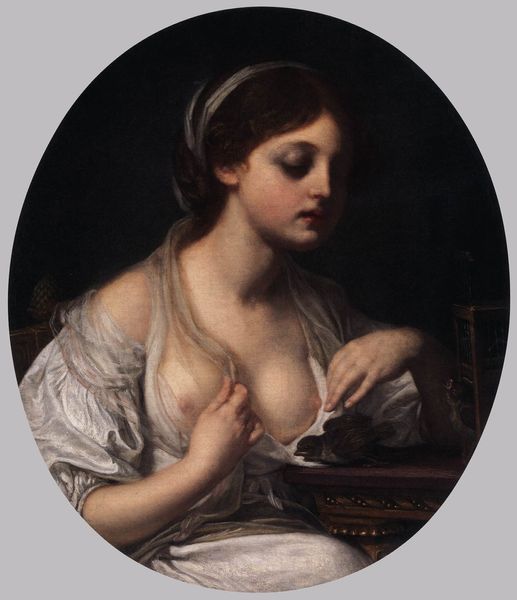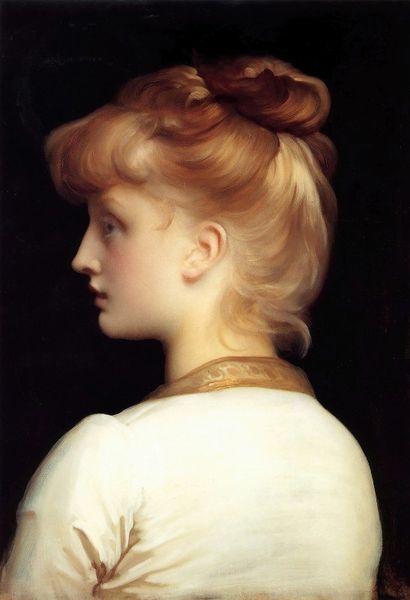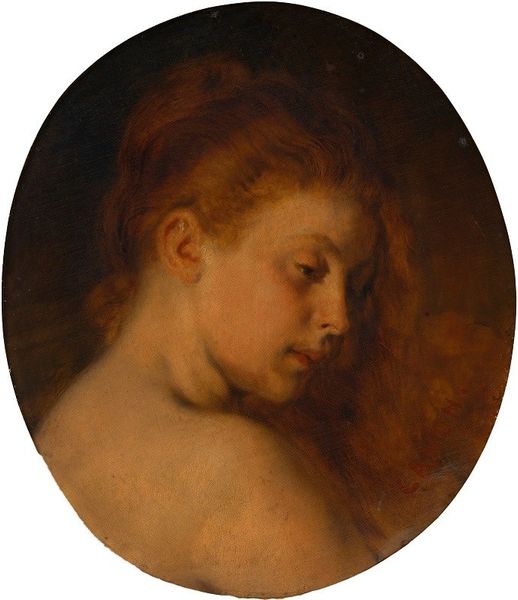
Copyright: Public domain
Jean-Léon Gérôme painted ‘The Bacchante’ during the late 19th century in France, a period marked by both rapid social change and a fascination with classical antiquity. This image represents a follower of the Roman god Bacchus, a deity associated with wine, fertility, and ecstasy. This aesthetic interest in mythological subjects reflects the values of academic art, cultivated in institutions like the École des Beaux-Arts, where Gérôme trained and later taught. The Bacchante's introspective gaze is arresting, and the ram's horns are a potent symbol of untamed nature. Yet, the artist's controlled handling of paint, his smooth brushwork, and his careful attention to detail all work to contain the implied wildness of the subject. The artistic institutions of the time shaped how artists perceived and portrayed the classical world, often filtering it through a lens of idealized beauty and moralizing narrative. Historical archives, academic papers, and critical reviews can all help us to unpack the complex relationship between artistic representation and the social norms of the time. Ultimately, this artwork invites us to reflect on the ways in which our understanding of the past is mediated by the cultural values of the present.
Comments
No comments
Be the first to comment and join the conversation on the ultimate creative platform.
